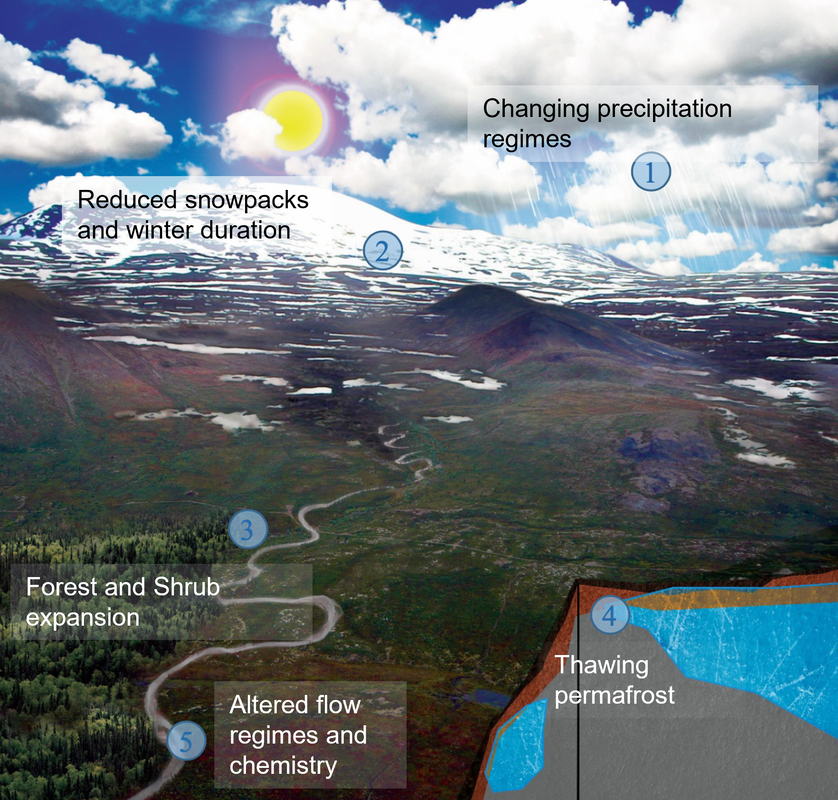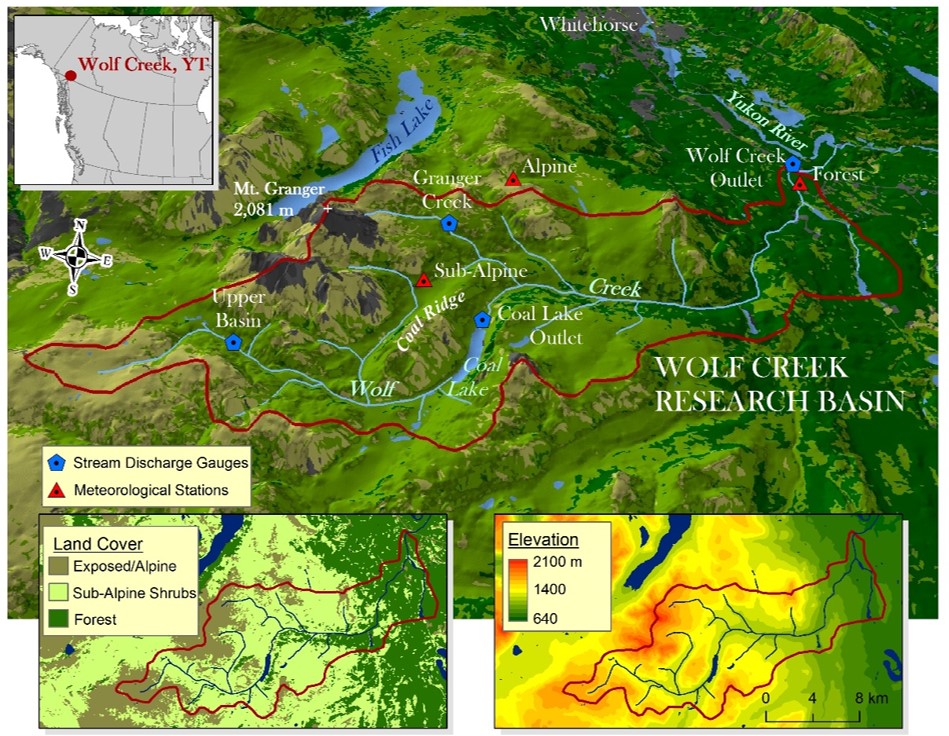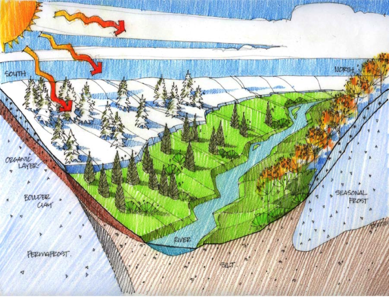About
|
Wolf Creek Research Basin (WCRB) is located on the traditional territory of the Kwanlin Dün First Nation, Ta’an Kwäch’än Council and Carcross/Tagish First Nation. In 1992, the WCRB was established in the sub-Arctic mountainous headwaters of the Yukon River, near Whitehorse, Yukon, Canada and is representative of many headwater basins along the far northern reaches of the North American Cordillera. WCRB was established to provide science-based evidence for decision-making in the across of water, climate and the biosphere and to provide a test-bed to help resolve deficiencies in hydrological models in cold climates. The foundation of research in WCRB is to improve the understanding of cold region hydrological processes and their interaction with climate and vegetation and to better represent this understanding through improved conceptualization and parametrization of numerical hydrological and related models.
|
"Wolf Creek has grown through the years, and is now a place where people from around the world come to look for answers as to how climate change will impact the north." - Dr. Sean Carey
Characteristics and Instrumentation
|


